#architectural visualization software
Explore tagged Tumblr posts
Text
Top 5 Home Design and Construction Software
The home design and construction industry has evolved significantly with the advent of technology, leading to the development of sophisticated software tools that enhance design processes, improve collaboration, and streamline project management. Here, we explore the top five home design and construction software options available today, highlighting their features, benefits, and suitability for…
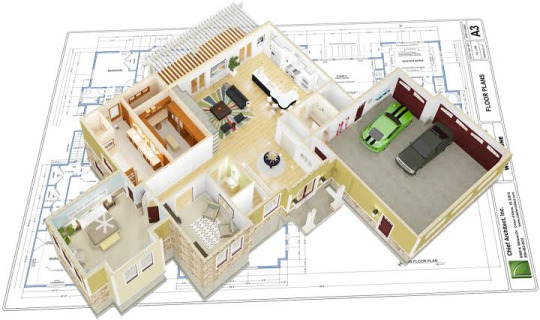
View On WordPress
#3D modeling software#Archicad review#architectural design tools#architectural visualization software#AutoCAD for architects#best home design software#BIM software#CAD software#Chief Architect features#collaborative design tools#construction project management tools#construction software#home design applications#home design software#interior design software#residential design software#Revit alternatives#SketchUp benefits
0 notes
Text
Revolutionize Your Art with Leonardo AI!
Leonardo AI is revolutionizing artistic creation with its advanced algorithms that transform real-world ideas into stunning masterpieces. This dynamic platform empowers us to design imaginative game assets, including characters, artifacts, landscapes, conceptual visuals, and intricate architectures.
By merging cutting-edge technology with our creative fervor, Leonardo AI enables artists and designers to bring their visions to life. It injects depth and vibrancy into our projects, making it perfect for those looking to elevate their creative endeavors. Discover how this AI-driven toolset offers an unparalleled environment for artistic innovation!
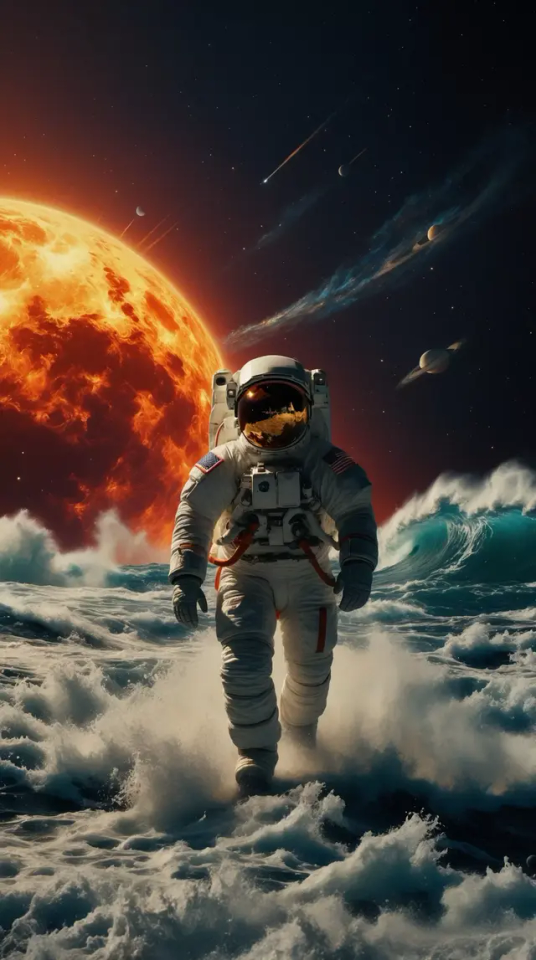
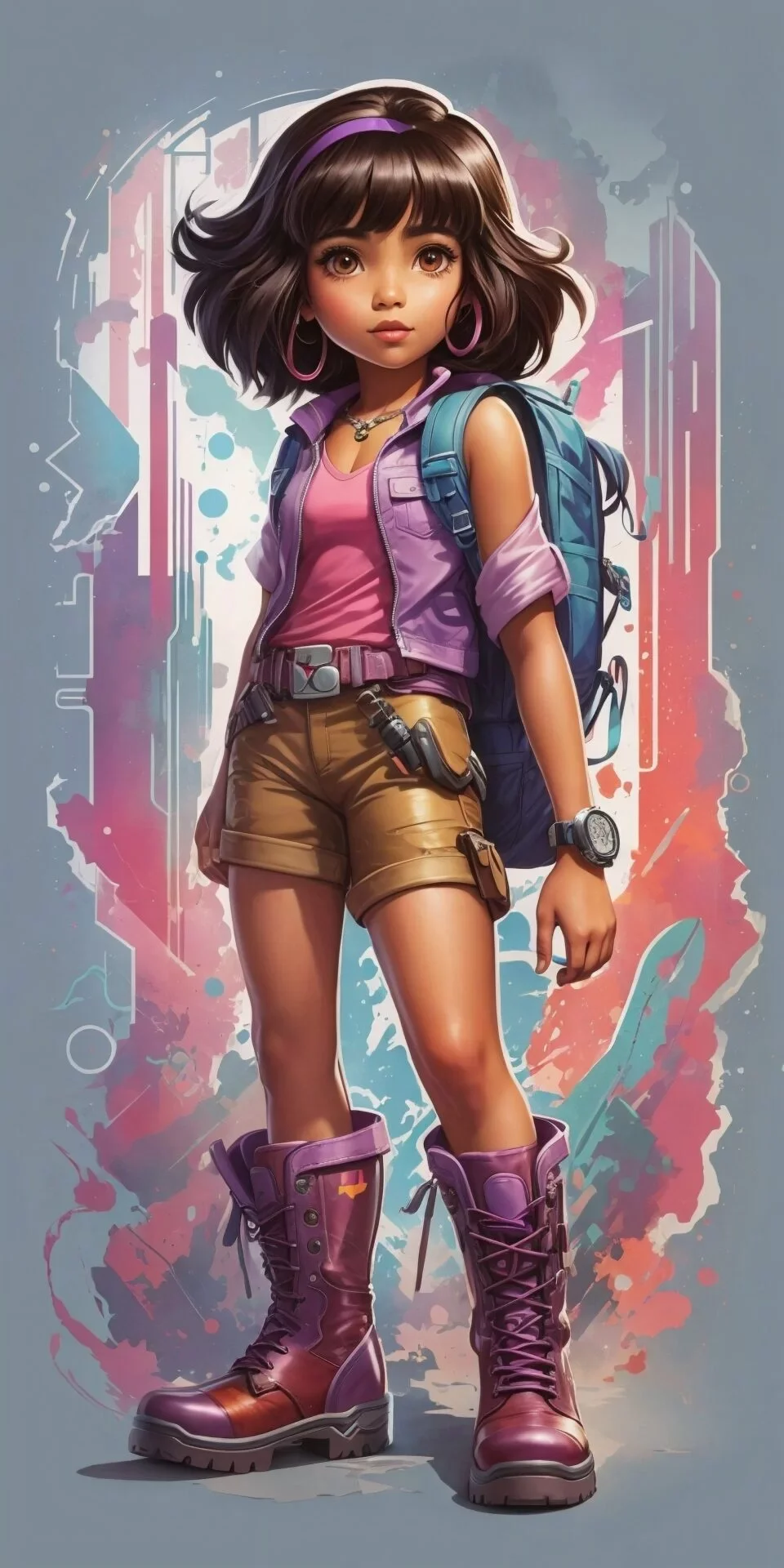
#LeonardoAI #ArtisticInnovation
#Leonardo AI#artistic revolution#creative tools#AI algorithms#game assets#character design#digital art#artistic masterpieces#innovative platform#creative projects#landscape design#architecture design#imaginative visuals#artistic innovation#AI creativity#design software#elevate creativity#vibrant art#concept art#technology and art#art community#digital creators#AI art tools#artistic expression#creative empowerment#visual storytelling#art techniques#design inspiration#future of art#unleash creativity
2 notes
·
View notes
Text
Google SketchUp with V-Ray Training
https://www.attitudetallyacademy.com/class/google-sketchup-with-vray-training
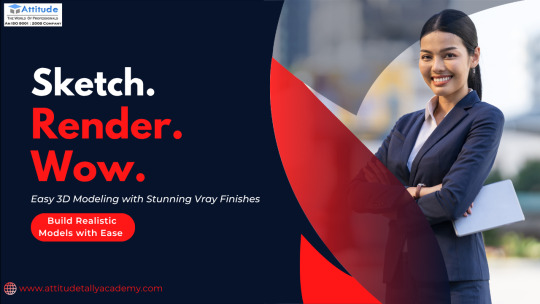
Master 3D modeling and visualization with our Google SketchUp with V-Ray Training. This hands-on course covers 3D architectural modeling, rendering techniques, lighting, textures, and creating photorealistic visuals. Ideal for aspiring architects, interior designers, and civil engineers who want to bring their concepts to life using professional tools. Gain the creative and technical skills needed to stand out in the competitive design industry. Whether you’re a beginner or looking to upskill, this training builds a strong foundation for your design career.
Visit Attitude Academy
Yamuna Vihar :- https://maps.app.goo.gl/gw9oKCnXDXjcz4hF7
Uttam Nagar :- https://maps.app.goo.gl/iZoQT5zE3MYEyRmQ7
Yamuna Vihar +91 9654382235
Uttam Nagar +91 9205122267
Visit Website: https://www.attitudetallyacademy.com
Email: [email protected]
#SketchUp training#V-Ray course#3D modeling#interior design software#rendering skills#architectural visualization#design training Delhi#Attitude Academy
0 notes
Text
Visualization plays a significant role in the construction and design of workflows. An architect or designer needs to conceptualize innovative ideas to achieve success in architectural design projects. The architects or designers are required to communicate with the stakeholders, collaborators, or prospects to achieve success in their careers. In this context, 3D visualization styles are important to level up the careers of designers and architects.
The top benefits of visualization for architects and designers include:
Creating innovative and attractive presentations
Visualizations help to show how the upcoming project will look while pitching the project idea to the client. Visualization helps to communicate cost changes of the project along with different types of design iterations. Thus, the presentation regarding the proposed project becomes more attractive to the client which influences the winning of the project.
Paul Millet, who is an architect uses 3D software to make striking presentation materials for competitions with the purpose of restoring the iconic cultural buildings of Europe. This presentation of Paul in Clé Millet beat the competition helps to win the job.
Read more
1 note
·
View note
Text

#3D architectural walkthroughs#benefits of 3D walkthroughs#architecture visualization techniques#immersive design experiences#architectural rendering software#virtual reality in architecture#interactive design presentations#client engagement in architecture#architectural design tools#3D visualization for real estate.
1 note
·
View note
Text
Task Manager App: Effortlessly Develop One
Create a Task Manager app using C# WPF and the MVVM pattern. #WPF # Tutorial #MVVM #C-Sharp #Development #Developer #CoderTrend
Using C#, WPF and the MVVM architecture to create a stunning and Useful Task Manager Application Welcome to our comprehensive series where we delve into the creation of a sophisticated Task Manager application using WPF (Windows Presentation Foundation). This journey is not just about building an application; it’s an exploration into the robust capabilities of C# and WPF, crowned with the…

View On WordPress
#.NET Development#Advanced C Techniques#C Programming#Code Efficiency#Coding for Beginners#Desktop Application Development#Model-View-ViewModel#MVVM Pattern#Scalable Software Design#Software Architecture#Task Manager App#UI/UX Design#Visual Studio Tips#Windows Application Development#WPF Tutorial
0 notes
Text
Unveiling the Power of 3D Visualization: Revolutionizing Engineering Applications
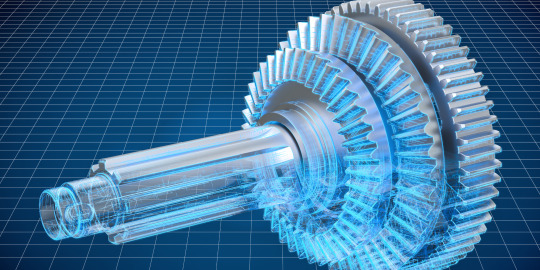
In the world of engineering, complex concepts and intricate designs often require effective means of communication to convey ideas, identify potential issues, and foster innovation. 3D visualization has emerged as a powerful tool that not only aids in comprehending intricate engineering concepts but also fuels creativity and enhances collaboration among multidisciplinary teams. This blog dives deep into the realm of 3D visualization for engineering applications, exploring its benefits, applications, and the technologies driving its evolution.
The Power of 3D Visualization
1. Enhanced Understanding: Traditional 2D drawings and diagrams can sometimes fall short in capturing the full complexity of engineering designs. 3D visualization empowers engineers, architects, and designers to create realistic and immersive representations of their ideas. This level of detail allows stakeholders to grasp concepts more easily and make informed decisions.
2. Identification of Design Flaws: One of the primary advantages of 3D visualization is its ability to identify potential design flaws before physical prototyping begins. Engineers can simulate real-world conditions, test stress points, and analyze the behavior of components in various scenarios. This process saves both time and resources that would have been wasted on rectifying issues post-construction.
3. Efficient Communication: When working on multidisciplinary projects, effective communication is essential. 3D visualization simplifies the sharing of ideas by presenting a clear visual representation of the design. This reduces the chances of misinterpretation and encourages productive discussions among team members from diverse backgrounds.
4. Innovation and Creativity: 3D visualization fosters creativity by enabling engineers to experiment with different design variations quickly. This flexibility encourages out-of-the-box thinking and exploration of unconventional ideas, leading to innovative solutions that might not have been considered otherwise.
5. Client Engagement: For projects involving clients or stakeholders who might not have technical expertise, 3D visualization serves as a bridge between complex engineering concepts and layman understanding. Clients can visualize the final product, making it easier to align their expectations with the project's goals.
Applications of 3D Visualization in Engineering
1. Architectural Visualization: In architectural engineering, 3D visualization brings blueprints to life, allowing architects to present realistic walkthroughs of structures before construction. This helps clients visualize the final appearance and make informed decisions about design elements.
2. Product Design and Prototyping: Engineers can use 3D visualization to create virtual prototypes of products, enabling them to analyze the functionality, ergonomics, and aesthetics. This process accelerates the design iteration phase and reduces the number of physical prototypes required.
3. Mechanical Engineering: For mechanical systems, 3D visualization aids in simulating motion, stress analysis, and assembly processes. Engineers can identify interferences, optimize part arrangements, and predict system behavior under different conditions.
4. Civil Engineering and Infrastructure Projects: From bridges to roadways, 3D visualization facilitates the planning and execution of large-scale infrastructure projects. Engineers can simulate traffic flow, assess environmental impacts, and optimize structural design for safety and efficiency.
5. Aerospace and Automotive Engineering: In these industries, intricate designs and high-performance requirements demand rigorous testing. 3D visualization allows engineers to simulate aerodynamics, structural integrity, and other critical factors before manufacturing.
Technologies Driving 3D Visualization
1. Computer-Aided Design (CAD): CAD software forms the foundation of 3D visualization. It enables engineers to create detailed digital models of components and systems. Modern CAD tools offer parametric design, enabling quick modifications and iterative design processes.
2. Virtual Reality (VR) and Augmented Reality (AR): VR and AR technologies enhance the immersive experience of 3D visualization. VR headsets enable users to step into a digital environment, while AR overlays digital content onto the real world, making it ideal for on-site inspections and maintenance tasks.
3. Simulation Software: Simulation tools allow engineers to analyze how a design will behave under various conditions. Finite element analysis (FEA) and computational fluid dynamics (CFD) simulations help predict stress, heat transfer, and fluid flow, enabling design optimization.
4. Rendering Engines: Rendering engines create photorealistic images from 3D models, enhancing visualization quality. These engines simulate lighting, materials, and textures, providing a lifelike representation of the design.
Future Trends and Challenges
As technology evolves, so will the field of 3D visualization for engineering applications. Here are some anticipated trends and challenges:
1. Real-time Collaboration: With the rise of cloud-based tools, engineers worldwide can collaborate on 3D models in real time. This facilitates global teamwork and accelerates project timelines.
2. Artificial Intelligence (AI) Integration: AI could enhance 3D visualization by automating design tasks, predicting failure points, and generating design alternatives based on predefined criteria.
3. Data Integration: Integrating real-time data from sensors and IoT devices into 3D models will enable engineers to monitor performance, identify anomalies, and implement preventive maintenance strategies.
4. Ethical Considerations: As 3D visualization tools become more sophisticated, ethical concerns might arise regarding the potential misuse of manipulated visualizations to deceive stakeholders or obscure design flaws.
In conclusion, 3D visualization is transforming the engineering landscape by enhancing understanding, fostering collaboration, and driving innovation. From architectural marvels to cutting-edge technological advancements, 3D visualization empowers engineers to push the boundaries of what is possible. As technology continues to advance, the future of engineering will undoubtedly be shaped by the dynamic capabilities of 3D visualization.
#3D Visualization#Engineering Visualization#CAD Software#Virtual Reality (VR)#Augmented Reality (AR)#Design Innovation#Visualization Tools#Product Design#Architectural Visualization#Mechanical Engineering#Civil Engineering#Aerospace Engineering#Automotive Engineering#Data Integration#Real-time Visualization#Engineering Trends#Visualization Technologies#Design Optimization
1 note
·
View note
Text
worldbuilding websites list
guides/prompts
Fantasy Worldbuilding Questions - SFWA
Dr. Zahir's Ethnographical Questionnaire - FrathWiki
University of Auntimoany Ethnographical Questionnaire
Creature-Race creation sheet by Sethian-Motzart on DeviantArt
Worldbuilding Bible Template – Ellen Brock
Guide to World Building - Pantheons — Dump Stat Adventures
Building a Pantheon: How to Choose Your Gods - Tribality
Making Gods & Pantheons: Worldbuilding Abstract | Red Ragged Fiend
I invented this world building system for myself, and it's helped me a lot. Posting it here in case it helps somebody else too! (and because mnemonics are rad) : r/worldbuilding
Simple Ideas for Your Solarpunk Worlds : r/worldbuilding
50 Worldbuilding Prompts : r/worldbuilding
A few months ago I posted a not-so-elegant expansion of the 4-elements system, and got tons of truly excellent feedback. Inspired by the exciting discussions from back then, here is version 2.0! CC appreciated :) : r/worldbuilding
TheCosmicForces-WoWChronicleSample.png (PNG Image, 1350 × 1800 pixels) — Scaled (37%)
GitHub - honno/classical-elements-expansion: Because the alchemical elements are so last millennia.
brownlisthumanuniversals.pdf - Google Drive
Worldbuilding: Fantasy Religion Design Guide – Inkwell Ideas
Worldbuilding: Clothing and Fashion | HumanVariant
A Guide to Conworld Architecture : r/worldbuilding
Medieval Bestiary : Contents/SiteMap
kosemen-2017-updated-edition-of-book-all-your-yesterdays.pdf
Political Simulator
A World Building Checklist | Articles | cru’s D&D Reading Room
Split City
Fantasy name generators. Names for all your fantasy characters.
word processors/graph makers/visualizers
TiddlyWiki — a non-linear personal web notebook
bibisco: Best Novel Writing Software for Writers
Preceden Timeline Maker: Create a Timeline in Minutes
Timetoast timeline maker | Timetoast timelines
Free online timeline maker
draw.io
Parliament Diagrams
TreeGraph 2 - A phylogenetic tree editor
Fantasy Calendar - Level up your narrative
Family Echo - Free Online Family Tree Maker
Hero Forge Custom Miniatures
Tennessine
Courtney’s Picrew Zone
Ellipsus | Collaborative writing software
real world inspiration
The Meaning and History of First Names - Behind the Name
Geologic Time Scale - Major Divisions of Geologic Time Chart
Geologic Time Scale v. 6.0 - The Geological Society of America - timescl.pdf
Travel Through Deep Time With This Interactive Earth | Smithsonian
ChronostratChart2023-09 - ChronostratChart2023-09.pdf
ics-chart
International Commission on Stratigraphy
Home - Nationalclothing.org
Folk Fashion Tumblr - Traditional Clothing from the world
Glossary for Medieval Art and Architecture
Heraldry Links-A Free Learning Resource
Flags of the World
Food Timeline: food history research service
History of invention: A science and technology timeline
Medieval Bestiary : Animals in the Middle Ages
Medieval Life
Medievalists.net - Where the Middle Ages Begin
Historical World Maps - World History Atlas
53 notes
·
View notes
Text
A-Café (Update #25) - Community Discussion
Good morning everyone! I know it's been a while since I've posted, but I'm finally back with another community update. In the first part, I'll be giving a brief overview of where we're at in terms of project progress. Then, in the second half, we'll discuss a new development in app accessibility.
Without further ado, let's begin!
1) Where are we at in the project currently?
A similar question was asked in the A-Café discord recently, so I figured I'd include my response here as well:
Right now we’re reworking the design of A-Café, both visually and architecturally. The initial planning and design phase of the project wasn’t done very thoroughly due to my inexperience, so now that I’m jumping back into things I want to ensure we have a solid prototype for usability testing. For us that means we’ve recently done/are doing a few things:
analyzing results from the old 2022 user survey (done)
discussing new ideas for features A-Café users might want, based on the 2022 user survey
reevaluating old ideas from the previous app design
making a new mock-up for usability testing
Once the mock-up is finished, I plan on doing internal testing first before asking for volunteer testers publicly (the process for which will be detailed in an upcoming community update).
2) Will A-Café be available for iOS and Android devices?
Yes! In fact, the first downloadable version of A-Café may no longer be so device-specific.
What do I mean by that? Well, in the beginning, the plan for A-Café was to make two different versions of the same app (iOS and Android). I initially chose to do this because device-specific apps are made with that device's unique hardware/software in mind--thus, they have the potential to provide a fully optimized user experience.
However, I've since realized that focusing on device-specific development too soon may not be the right choice for our project.
Yes, top-notch app performance would be a big bonus. But by purely focusing on iOS and Android devices for the initial launch, we'd be limiting our audience testing to specific mobile-users only. Laptop and desktop users for example, would have to wait until a different version of the app was released (which is not ideal in terms of accessibility).
Therefore, I've recently decided to explore Progressive Web App development instead.
[What is a Progressive Web App?]
A Progressive Web App (or PWA) is "a type of web app that can operate both as a web page and mobile app on any device" (alokai.com)
Much like a regular mobile app, a PWA can be found through the internet and added to your phone's home screen as a clickable icon. They can also have the ability to work offline and use device-specific features such as push-notifications.
Additionally, due to being web-based applications, PWAs can be accessed by nearly any device with a web browser. That means regardless of whether you have an iOS or Android device, you'd be able to access the same app from the same codebase.
In the end, a PWA version of A-Café should look and act similarly to an iOS/Android app, while also being accessible to various devices. And, due to having only one codebase, development of PWAs tends to be faster and be more cost-effective than making different versions of the same app.
To be clear, I haven't abandoned the idea of device-specific development entirely. We could launch iOS/Android versions of A-Café in the future if demand or revenue end up being high enough. But as of right now, I don't believe doing so is wise.
[What Does this Mean for me as a User?]
In terms of app installation and user experience, not much should hopefully change. I'd like to have A-Café available on both the Apple App Store and Google Play Store.
There will also be the option of searching for A-Café via your device's web browser, and then installing it on your home screen (iOS devices can only do so using Safari). We will likely rely on this method until we can comfortably ensure user access to A-Café on the Apple App Store and Google Play Store.
-------------
And that's it for now! Thank you for reading this latest community update. For more insight into the development process, consider joining the A-Café discord. If you have any questions or concerns regarding this post, we would love to hear your input in the comments below. See you later!
26 notes
·
View notes
Text
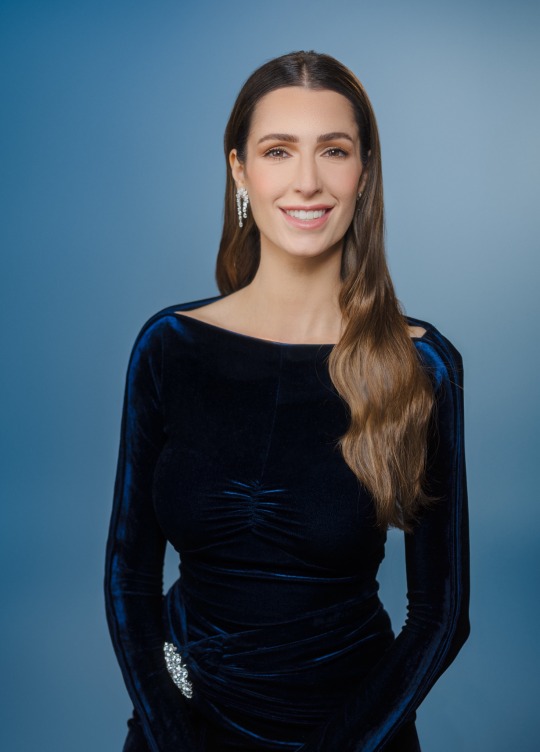
Happy 30th Birthday, Princess Rajwa!
28 April 2024 marks the 30th birthday of Princess Rajwa Al Hussein.
Born on April 28, 1994, in Riyadh, Her Royal Highness is the daughter of the late Khalid bin Musaed bin Saif bin Abdulaziz Al-Saif, and Mrs. Azza bint Nayef Abdulaziz Ahmed Al-Sudairi, who is the younger sister of Faisal, Nayef, and Dana.
Last year on June 1, Princess Rajwa married His Royal Highness Crown Prince Hussein bin Abdullah II.
She received her secondary education in Saudi Arabia and pursued higher education at Syracuse University's College of Architecture in New York, USA. She holds a degree in visual communications from the Fashion Institute of Design and Merchandising in the USA.
Her hobbies include horse riding, drawing, designing handicrafts, and creating engineering and artistic designs using digital media software. She is fluent in English and French.
40 notes
·
View notes
Text
given that he grew up a normal life…
also these jobs are general examples, i dont know entirely enough if they are accurate
#dean winchester#supernatural#dean#spn#winchester#sam winchester#dean headcanons#dean fanfiction#fanfiction#supernatural x reader#college#stanford era#dean au#spn au#dean college#au#dean headcanon
35 notes
·
View notes
Text
Blend Tradition with Modernity in Your 3D Projects!
Introducing our Modern Japanese-style Rural Courtyard Landscape Model, a perfect fusion of traditional Japanese aesthetics and contemporary design. This model is ideal for creating serene, culturally rich environments that captivate and inspire.

Key Features:
Harmonious Design: Combines traditional Japanese elements like Zen gardens, wooden structures, and water features with modern landscaping touches.
Versatile Use: Perfect for architectural visualizations, game environments, animations, and cinematic projects.
Universal Compatibility: Fully compatible with Blender, Cinema4D, Maya, 3ds Max, and other major 3D software.
Rendering-Ready: Optimized for high-quality 3D rendering, ensuring stunning visual results.

Ideal For:
Architects & Designers: Showcase unique blends of traditional and modern Japanese design in your projects.
Game Developers: Build immersive, culturally rich environments for exploration or storytelling.
Animators & Filmmakers: Create serene, nature-inspired scenes for cinematic storytelling.

Download the Modern Japanese-style Rural Courtyard Landscape Model today and bring a touch of timeless elegance and modern sophistication to your 3D creations!
10 notes
·
View notes
Video
youtube
At the 2025 24 Hours of Le Mans, Porsche unveiled a unique one-off vehicle: the Porsche 963 RSP. Developed as a tribute to the legendary 917 and inspired by Count Rossi’s 1975 street-driven prototype, the 963 RSP is based on Porsche’s LMDh competition car but reimagined for public roads under special conditions.
The project was a collaboration between Porsche AG, Porsche Penske Motorsport, and Porsche Cars North America, with direct involvement from Roger Penske—whose initials form the RSP name. The concept was initiated as a design study and passion project, eventually culminating in a street-legal prototype unveiled near Circuit de la Sarthe.
The 963 RSP retains the race-spec 4.6-liter twin-turbocharged V8 hybrid powertrain, delivering up to 680 horsepower. Originally developed for the RS Spyder and later refined in the 918 Spyder, the engine architecture includes a flat crankshaft, short stroke, and Van der Lee turbochargers for optimized throttle response. The hybrid system uses a Bosch motor generator unit and a Williams Advanced Engineering battery, working with a 7-speed Xtrac sequential gearbox. For road use, the power delivery was remapped to be smoother, and the system was configured to run on pump fuel.
To comply with road operation under French regulation, the chassis was adjusted with raised ride height, softened Multimatic dampers, and revised software to enable functioning headlights, taillights, and turn signals. Michelin rain-spec tires were mounted on 18-inch forged OZ wheels. Unique modifications such as covered wheel arches, a working horn, and license plate mounts were added.
Visually, the 963 RSP is finished in Martini Silver paint—not a wrap—requiring a triple-layer lacquer on ultra-thin Kevlar® and carbon fiber surfaces. An enamel Porsche crest replaces the standard nose graphic, and 1970s Michelin branding adds a period-correct touch. The rear features a 3D-printed “963 RSP” badge.
The interior departs sharply from the competition car. Trimmed in tan leather and Alcantara, it includes a cushioned, leather-wrapped carbon seat, air conditioning, a leather-finished steering wheel, and even a detachable 3D-printed cup holder. Storage space is provided for a laptop, headset, and Roger Penske’s custom carbon helmet. Ventilation outlets mimic the 917’s engine fan design, reinforcing historical continuity.
While the 963 RSP is not homologated for mass production, it is fully operational and authorized for limited road use under manufacturer permissions. Following its debut, the vehicle will appear at the Porsche Museum in Stuttgart and the Goodwood Festival of Speed.
This project showcases Porsche’s ability to blend heritage, engineering, and bespoke craftsmanship—all within the limits of a modern endurance prototype.
Porsche 963 RSP – Technical Specifications
Model name: Porsche 963 RSP Type: Road-legal high-performance prototype Chassis: Carbon-fiber monocoque (LMP2-based, by Multimatic) Length: 5100 mm Width: 2000 mm Height: 1060 mm Wheelbase: 3148 mm Weight: Approximately 1030 kg
Engine type: Twin-turbocharged 4.6-liter V8 Engine code: 9RD (derived from Porsche 918 Spyder) Max engine power: Over 515 kW (approximately 700 PS) Max RPM: Over 8000 rpm Turbo boost: Approximately 0.3 bar (2 turbos)
Hybrid system: Bosch MGU with 1.35 kWh battery from Williams Total combined power output: 520 kW (707 PS, regulated) Drive system: Rear-wheel drive Transmission: 7-speed Xtrac sequential gearbox Clutch: Carbon-fiber racing clutch
Top speed: Over 330 km/h Suspension: Pushrod double wishbone with adjustable dampers Brakes: Carbon racing brakes with regenerative hybrid system Wheels: 18–19 inch race wheels adapted for road use
Fuel type: Synthetic or biofuel compatible Emissions: Modified for street approval Street modifications: Lighting, mirrors, exhaust system, license plate mounts
Interior: Stripped-down, race-focused with minimal comfort features Production: One-off road-legal concept
3 notes
·
View notes
Text
Enhancing Client Engagement with Immersive 3D Walkthroughs in Architecture

Explore how immersive 3D walkthroughs transform client engagement in the architectural process. These interactive platforms allow clients to actively explore designs, enabling architects to gather valuable feedback. This collaboration ensures that the final outcome meets client expectations, ultimately enhancing satisfaction and fostering stronger relationships.
#3D architectural walkthroughs#benefits of 3D walkthroughs#architecture visualization techniques#immersive design experiences#architectural rendering software#virtual reality in architecture#interactive design presentations#client engagement in architecture#architectural design tools#3D visualization for real estate
1 note
·
View note
Text
Mojito tweeted a lot earlier about ENNEAD Season 2, Episode 245. Object Box also did some 3D models for the series and shared some of the models on Naver and Blue Sky.
Spoilers for the new episode and the series going forward

Mojito: 모르실까봐…말하고 싶었어…
Machine English translation: I wanted to say… in case you didn't know…
----
She reiterates that Horuseth has a planned happy ending.
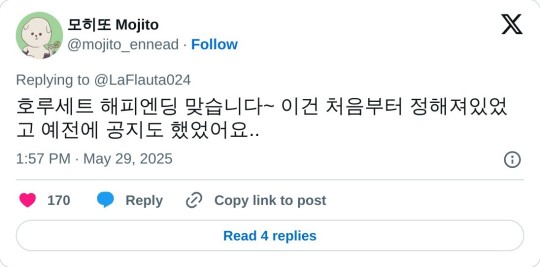
Mojito: 호루세트 해피엔딩 맞습니다~ 이건 처음부터 정해져있었고 예전에 공지도 했었어요..
Machine English translation: Horuset's happy ending is right~ This was decided from the beginning and was even announced before..
----
In response to someone asking about Isis and Nephthys, Mojito notes the story will go back to them at some point.

kkkkllffrrg: Mojito, we are very worried about our Isis and Nephthys. How soon can we see them? [sob emoji] Mojito: 나중에 나올 거에요. 걱정마세요.
Machine English translation: It'll come out later, don't worry.
----
In another thread, she notes Seth is weak to Horus' chest (or chests in general)

Mojito: (TMI) X꼭지 플러팅 한거임. 세트가 가슴에 약하니까
Machine English translation: (TMI) I just did the X-shaped plot. The set is weak to the chest.
----
In response to a question about the final episode coming up, Mojito states she has a little bit to go, though what that means in terms of episode count is anyone's guess.

lyj336: 그럼 마지막화가 다가오는건가요?
Machine English translation: So is the final episode coming up?
Mojito: 조금 남긴 했어용
Machine English translation: I left a little bit
----
Object box, which appears to be a software company/contractor with folks who create 3D models sometimes used in manhwa, created and shared some 3D models Mojito used in recent episodes for the moon temple. They have a longer blog post on Naver, and shared them on Blue Sky as well.
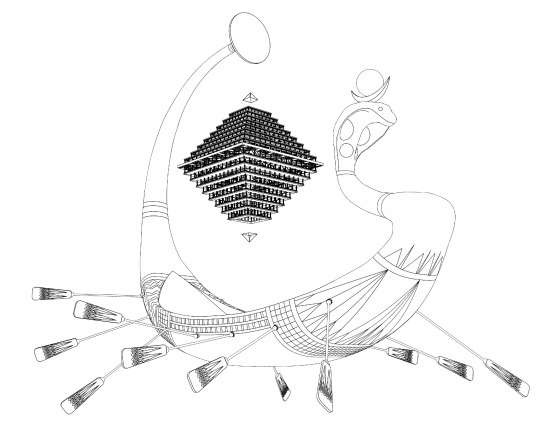
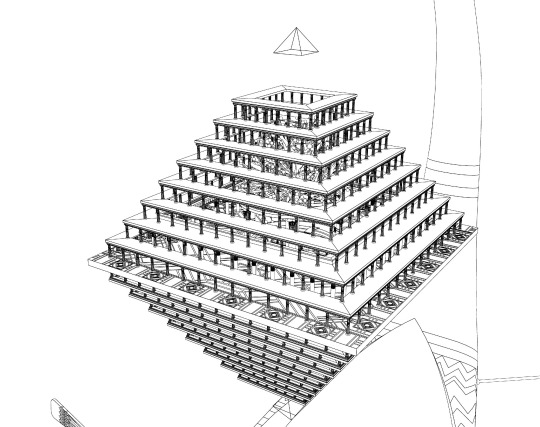
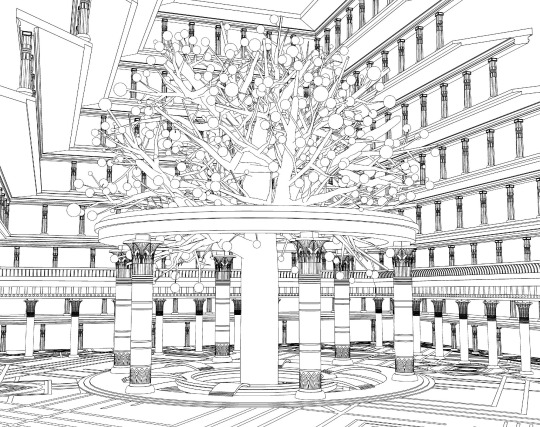
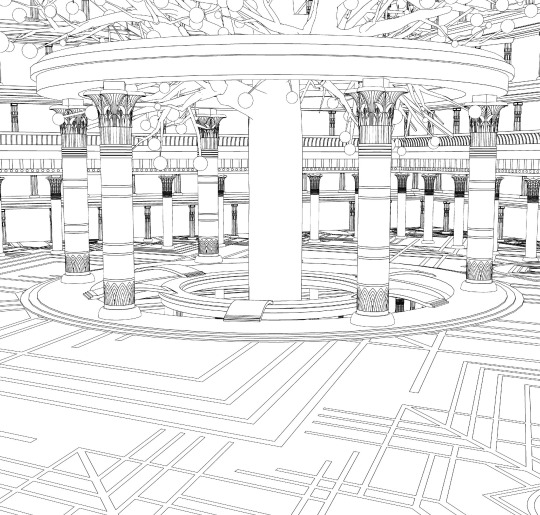
It's normal for visual artists to create 3D models, especially for architecture, and either reference or draw over them, which is seemingly what Mojito did. She's talked about this before, though it's been a while since we've seen some of the models.
#엔네아드#エネアド#ennead#ennead spoilers#boys love manhwa#fallfnewsposts#m/m#ennead by mojito#horuseth#horus ennead#seth ennead#isis ennead#nephthys ennead
3 notes
·
View notes
Note
In your answer about technical designers, you remarked that technical artists are "special unicorns" - what sorts of things give them that status, and what does it mean for a technical artist's career? Are there any other jobs in game dev you feel fall into the "special unicorn" category?
"Special unicorn" roles are generally similar in how difficult it is to find them combined with how useful they are to a dev team. Besides Technical Artist, there's also console architecture experts and Houdini VFX experts. While this list is by no means exhaustive, all three of these roles are in fields that are both difficult to master and extremely useful in most game dev teams.

Technical artists are the rare combination of being both technically minded and artistically minded at the same time. Somebody who is able to perform in both arenas at a professional level is rare, but the needs for people with those skills are enormous. Being able to build out and improve the tools and technology for other artists to create high quality visuals is in high demand because just about every team needs one.

A software engineer that specializes in game console architecture, for example, is incredibly useful to have on a team - every game on that platform will need optimization and having an expert direct those initiatives makes a big difference. However, game console architecture is both difficult to learn, lacks much public-facing documentation and material, and a constantly-moving target as firmware updates and such come. This also makes console architecture experts a "special unicorn" role.
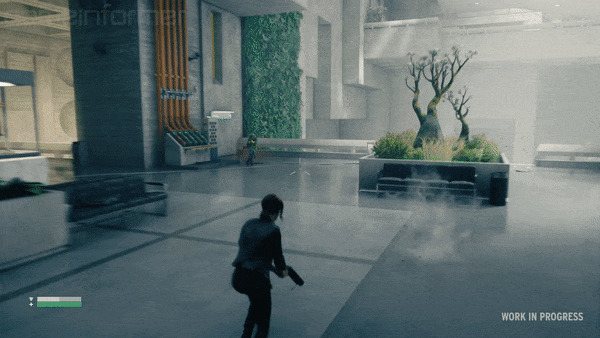
Good-looking VFX are needed in most games. Doing really good VFX generally involves a good understanding of procedural generation and simulation. Many in the industry use Houdini to create the sort of VFX shots you see in TV, movies, and video games. However, Houdini is both incredibly powerful and difficult to master. Thus they also meet the criteria for "special unicorn".
[Join us on Discord] and/or [Support us on Patreon]
Got a burning question you want answered?
Short questions: Ask a Game Dev on Twitter
Long questions: Ask a Game Dev on Tumblr
Frequent Questions: The FAQ
40 notes
·
View notes